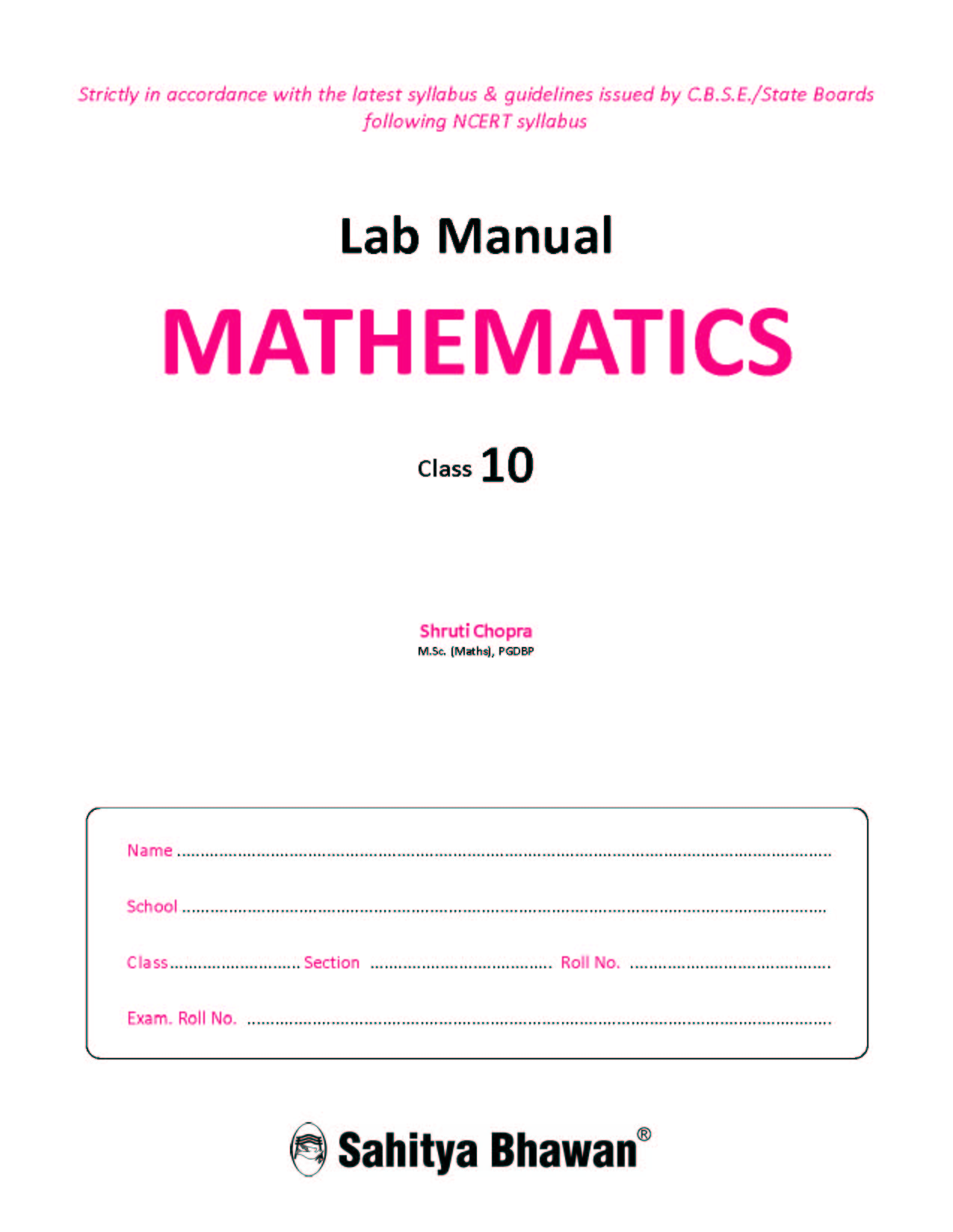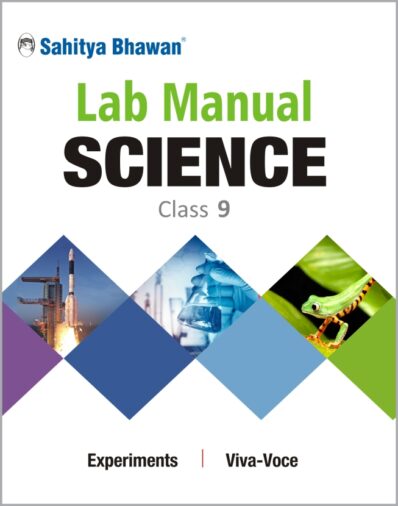Description
- Sahitya Bhawan Lab Manual with theory, Viva-voce Questions and Laboratory instruction for class 9, 10, 11, 12 has been prepared in accordance with the NCERT, CBSE, UP Board and other state boards syllabus.
- Practical book provides a better understanding of various concepts in a lucid manner.
- The entire matter is prepared in a way that it provides complete understanding of each topic.
- Viva-voice questions and answers helps the students in having a better understanding of concepts.
- Viva Voce questions are followed with answers.After theory matter, blank pages are provided for writing experiments.
- Lab Manual series contains Science, Mathematics, Social Science, Physics, Chemistry, Biology, Physical Education.
- Practical File | Practical file pdf ebook | State Board, Project work | How to write preface for a project | Latest Edition |State Board |Based on Ncert textbook |As per Ncert book | Ncert book questions |First class |Second class |Third class |Fourth class |Fifth class |Sixth class |Seventh class |Eight class |Ninth class |Tenth class |Eleventh class |Twelfth class |Worksheet | Book list |Hand writing book | Pdf dowanload (ebook)
Contents
Unit1 : number system
- Activity 1 To find the HCF of two given numbers by Euclids Division Lemma.
Unit 2 : algebra
- Activity 2 To verify experimentally that a quadratic polynomial can have at most two zeroes.
- Activity 3 To find the conditions for consistency of a pair of linear equations in two variables experimentally.
- Activity 4 To verify the relation between roots and coefficients of a quadratic equation.
- Activity 5 To find geometrically the solution of a quadratic equation ax2 + bx + c = 0, a 0 (where a = 1) by using the method of completing the square.
- Activity 6 To verify experimentally that a given sequence is an Arithmetic progression.
- Activity 7 To find the sum of first n odd natural numbers.Activity 8 To find the sum of first n terms of an arithmetic progression (A.P.).
Unit 3: coordinate geometry
- Activity 9 To find the distance between two students in a classroom by physically demonstrating theposition of the two students in a classroom, taking a set of reference axes with the corner of the classroom as origin.
- Activity 10 To divide a line segment by taking suitable points that intersects the axes at some point sand then verifying section formula.
- Activity 11 To verify the formula for the area of a triangle by graphical method.
Unit 4 : GEOMETRY
- Activity 12 To establish the criteria for similarity of two triangles.
- Activity 13 To verify the basic proportionality theorem.
- Activity 14 To verify Pythagoras theorem by paper cutting, paper folding and adjusting (arranging).
- Activity 15 To verify that a line dividing two sides of a triangle in the same ratio is parallel to the third side.
- Activity 16 To verify the relation between the ratio of areas of two similar triangles and their sides.
- Activity 17 To verify experimentally that the tangent at any point to a circle is perpendicular to the radius through that point.
- Activity 18 To find the number of tangents from a point to the circle.
- Activity 19 To verify that lengths of tangents drawn from an external point to a circle are equal byusing the method of paper cutting, paper folding and pasting.Activity 20 To verify the alternate segment theorem by the method of paper cutting, pasting and folding.
- Activity 21 To illustrate that the perpendicular bisectors of the sides of a triangle concur at a point(called the circumcentre) and that it falls : (a) inside for an acute-angled triangle.
- (b) on the hypotenuse of a right-angled triangle.
- (c) outside for an obtuse-angled triangle.
- Activity 22 To illustrate that the internal bisectors of angles of a triangle concur at a point (called the incentre), which always lies inside the triangle.
- Activity 23 To illustrate that the altitudes of a triangle concur at a point (called the orthocentre) and that it falls : (a) inside for an acute-angled triangle (b) at the right angle vertex for a right-angled triangle(c) outside for an obtuse-angled triangle.
- Activity 24 To illustrate that the medians of a triangle concur at a point (called the centroid), which always lies inside the triangle.
- Activity 25 To draw a quadrilateral similar to a given quadrilateral as per the given scale factor (less than 1).
Unit 5: trigonometry
- Activity 26 To understand the meaning of different trigonometric ratios using the circular board.
- Activity 27 To verify that the values of trigonometric ratios of an angle do not vary with the lengths of the sides of the triangle.
- Activity 28 To verify standard trigonometric identities.
- Activity 29 (a) To make a mathematical instrument clinometer (or sextant) for measuring the angle ofelevation/depression of an object. (b) To calculate the height of a building making use of clinometers (or sextant).
Unit 6 : MENSURATION
- Activity 30 To verify the sum of areas of three sectors of same radius r (say) formed at the vertices (as centre) of any triangle is.
- Activity 31 To understand the concept of surface area and volume of solids and to verify the fact thatincrease/decrease in the volume of a solid may not result the same.
- Activity 32 To illustrate the formula for the surface area of a circus tent.
- Activity 33 To obtain the formula for the volume of a frustum of a cone.
Unit 7 : STATISTICS AND PROBABILITY
- Activity 34 To graphically find the median of a grouped data.
- Activity 35 To graphically find the mode of a grouped data.
- Activity 36 To get familiar with the idea of probability of an event through a double colour card experiment.
- Activity 37 To determine experimental probability of a head (or a tail) by tossing a coin 1000 and compare it with its theoretical probability.
Projects
- Project 1 To investigate the use of Mathematics in architecture.
- Project 2 To investigate the use of Mathematics in nature.
- Project 3 To explore the meanings of Golden rectangle and Golden ratio and their relationship with some other mathematical concept
₹290.00 Original price was: ₹290.00.₹232.00Current price is: ₹232.00.Add to cart






















Reviews
There are no reviews yet.